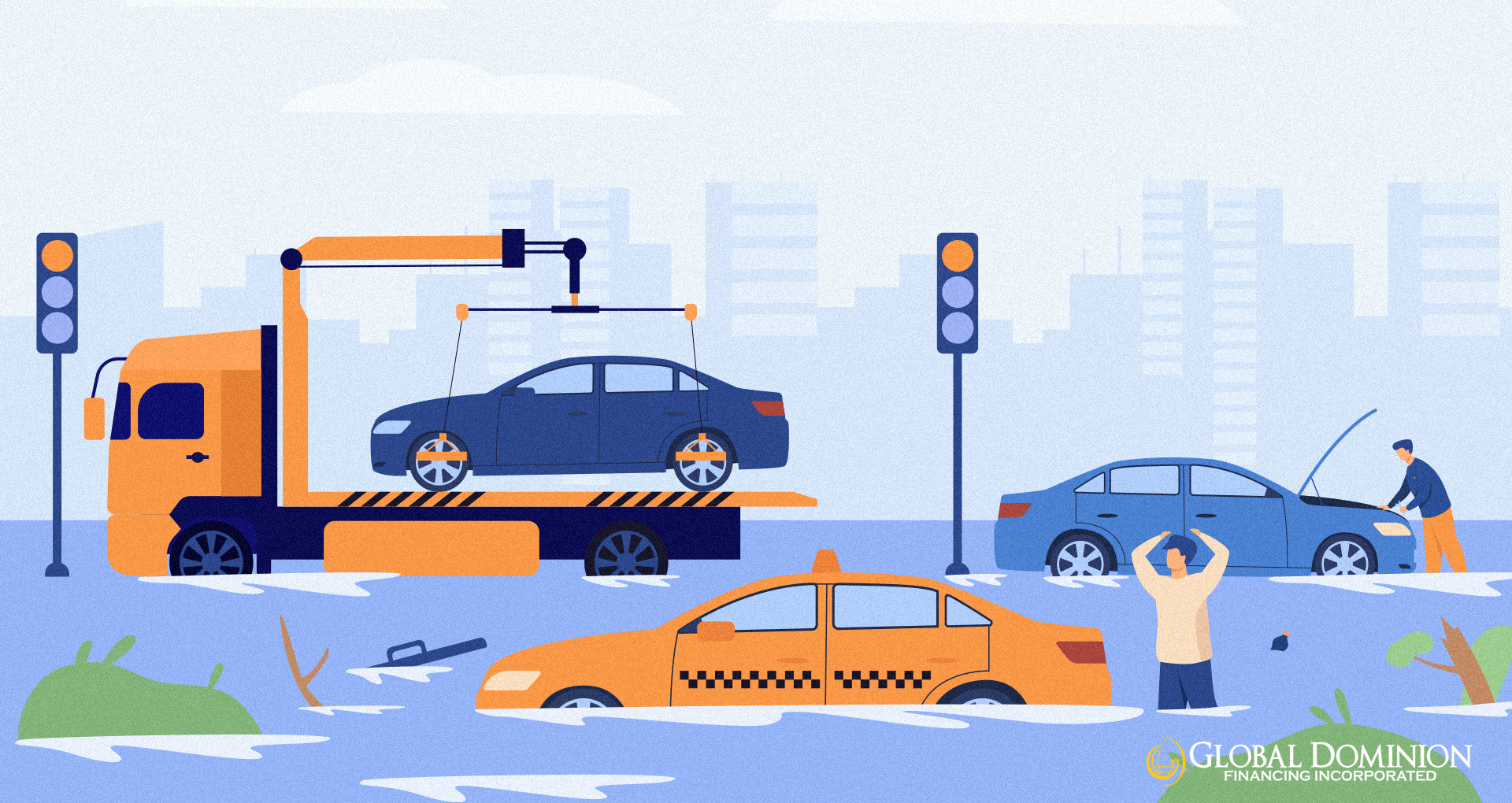What are the Damages of Flooded Cars?

During typhoons and flash floods, we often abandon our properties because our lives come first. The house follows, and cars often go last. But it is essential to protect your vehicles because of the convenience it provides. Aside from being a means of transportation, it can also serve as an asset exchangeable for money in the form of a car collateral loan that you can use to cope with the situation.
So, you should know the provisions of your car insurance under Acts of Nature or Acts of God and be aware of news when calamities may strike to prevent financial losses. To help you prepare for the worst, we listed the damages of flooded cars. You might need to look into the following auto parts:
1. Car Engine
The engine or motor is another car part that will be critically impacted by the flood and should be looked into immediately. The engine serves utmost importance as it converts a form of energy into mechanical energy. When the floodwater enters the parts of the engine (such as the cylinders and air intake), the piston will compress it. However, water is incompressible so the action will result in breakage of piston rods and engine stalling.
2. Electronics and Electrical System
The electronics and electrical system of a vehicle are the most vulnerable to flood damages. If moisture can result in a short circuit and breaking down the electrical system, then the vehicle’s immersion in water can magnify the damages. These cause malfunctions of the electrical system and its components, such as:
- Air conditioning system
- Anti-lock brake system
- Audio-video systems
- Automotive lights (brake lights, headlights, turn signals, etc.)
- Electrical control unit (ECU)
- Various fuses
- windows, locks, and seats
3. Fluids
Not only the flood will engulf the vehicles, but it will also enter even the smallest openings of the car’s inner workings. And the long exposure of car parts to floodwater spells danger to its structure and performance. When the floodwater will mix with the fluids, it will result in contamination, and therefore the unlikely mixture brings a lot of troubles to the spark plugs, fuel injectors, and the engine itself.
4. Brakes
As mentioned, the vehicle’s immersion in floodwater can create malfunctions in the brake system of the car. Brakes become slippery as the damp brake rotors and pads lose contact. The loss of friction due to the dampness prevents the brake system to perform properly.
5. Car Parts Prone to Corrosion
After flooding, if the car is left to dry for the sake of drying damages begin to appear due to the lack of lubrication. This can easily be missed out as rust doesn’t form immediately, and corrosion gives birth to various problems in the car. Some of the parts most prone to corrosion are the following:
- Brake pads
- Vehicle frame or chassis
- Engine parts
- Clutch
- Fenders
- Fuel tank
- Car muffler
- Screws and bolts
- Trunk
- Wheel wells
Without the car going through the correct procedure (including drying-out, cleaning treatment, and oil change), your brake fluid, coolant reservoirs, shifting gears, and transmission will suffer damages that will waste the structure and diminish the performance of your car.
5. Car Interior
Aside from infiltrating the engine and other internal parts, flood damages don’t spare the interior of your car. The floodwater where your car is submerged contains a dirty mixture of different liquids and particles, thus it promotes the growth of mildews and molds when the soaked parts are not cleaned or treated immediately. These molds can trigger allergies, asthma, and other respiratory diseases. You also have to deal with the rotten smell of the car brought by the accumulated fungi.
Usually, these mildews and molds are found on:
- Air conditioning system
- Carpets
- Door panels
- Floor mats
- Headliner
- Seats
- Trunk
6. Narrow and inconspicuous areas
Because floodwater is comprised of filthy water and different particles, it can seep in every opening of the car (inner workings included). It’s not a surprise if you find films of dirt, mud, or debris lodged in the different parts of the car that are narrow and inconspicuous. These include the underbody, engine compartment, hood, panels, and other deep recesses that are hard to reach and clean.
Quick Tips to Repair Flooded Car
In case the worst happened at the strike of a flood, here are the steps in handling the repair of flooded cars:
- Avoid starting up the car.
- Remove the battery.
- Make sure your car is dry before you inspect.
- Open the doors, hood, trunk to let out the musty smell from the seeping floodwater.
- Inspect how much the damage your car suffered.
- Contact your insurance provider for the assessment of damage and benefits claims.
- Go to your accredited auto repair shop and have the car checked by professional mechanics.





